Learn How To Soundproof Walls
The most effective technique for reducing noise is to install an extra layer of acoustic drywall with an acoustic membrane between drywall layers and seal any openings with acoustic sealant. Other popular techniques include resilient channels, blown–in insulation, or covering the walls with soundproof blankets and curtains. All of these options can be used to reduce noise […]
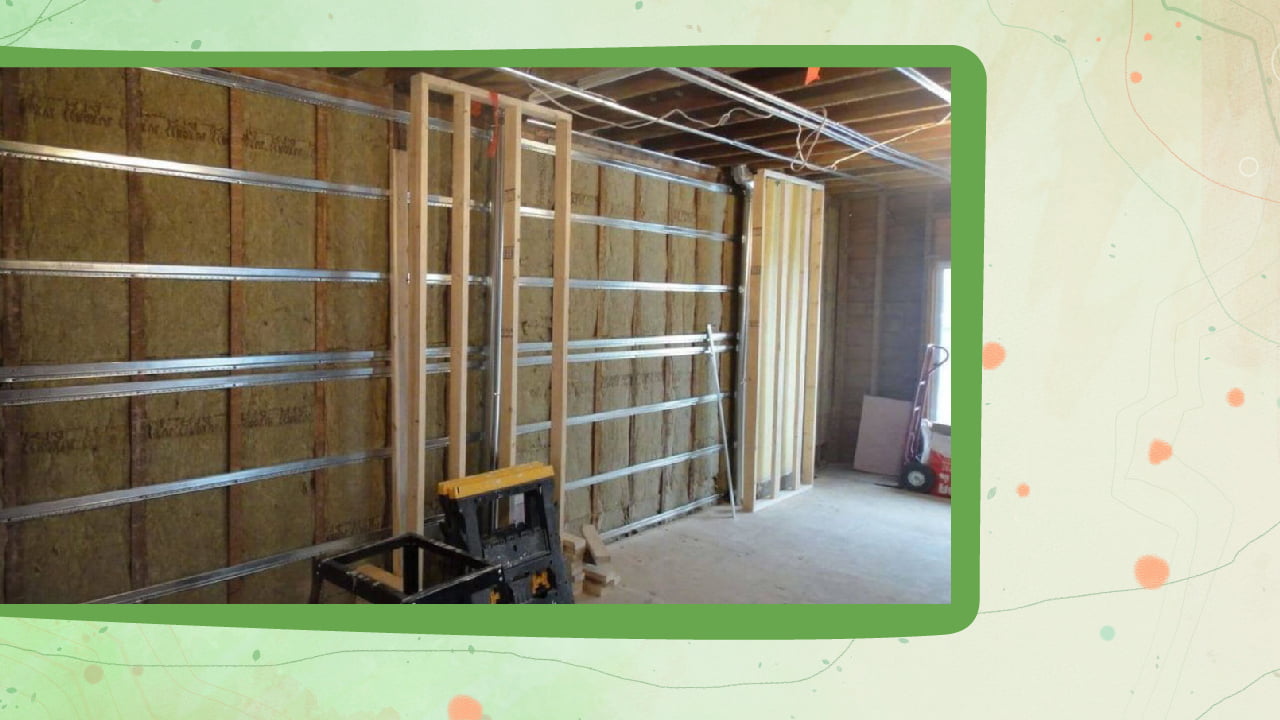
The most effective technique for reducing noise is to install an extra layer of acoustic drywall with an acoustic membrane between drywall layers and seal any openings with acoustic sealant. Other popular techniques include resilient channels, blown–in insulation, or covering the walls with soundproof blankets and curtains. All of these options can be used to reduce noise in both new and existing walls but do note that using simple sound absorbers is not enough, as they can’t stop sound waves entirely.
Living amidst noises, albeit a reality, can be inconvenient on more than one occasion. After all, you wouldn’t want to be bothered by unwanted sounds like that of nearby constructions or vehicles honking while watching your favorite TV show or working from home.
The good news is that you can employ different techniques to soundproof a wall, no matter if it’s old or new. Dive in to know how!
Learn How To Soundproof Walls
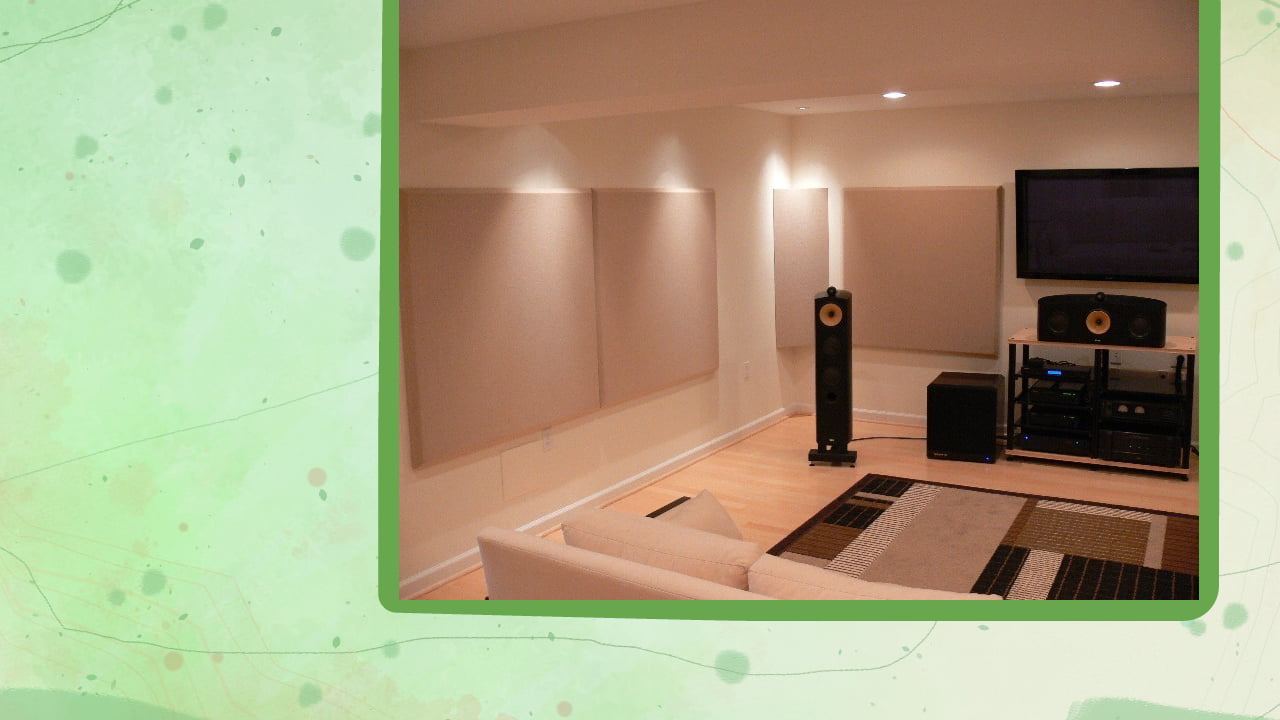
Why Should You Consider Soundproofing Walls?
Constant exposure to loud noise causes more than ear damage, annoyance, or lack of concentration. According to research, prolonged exposure to loud sounds can increase the risk of developing cardiovascular issues and high cholesterol.
Not only that, but it can also contribute to mental health problems such as depression, anxiety, and stress in adults and children alike. And this problem is especially prevalent in houses or apartments with thin walls that can’t block sounds; rather commonplace in cities today.
Hence, residential and commercial property owners are taking active steps to soundproof existing walls as well as build soundproofing walls.
Types Of Noises In Your Home
Broadly speaking, there are two types of noises in a general household- airborne sound and structure-borne sound.
As the name suggests, airborne sounds refer to sound waves transmitted by the air to reach your areas. Common examples of airborne noise include the sound of people talking or a TV playing in an adjacent room.
Structure-borne noises, on the other hand, result from objects hitting a surface to produce vibration, and these vibrations get transmitted via other surfaces in your home to reach your ears. For example, if you live in a multi-story building and hear the footsteps of a person walking above you, you’re hearing sound vibrations or structure-borne sounds.
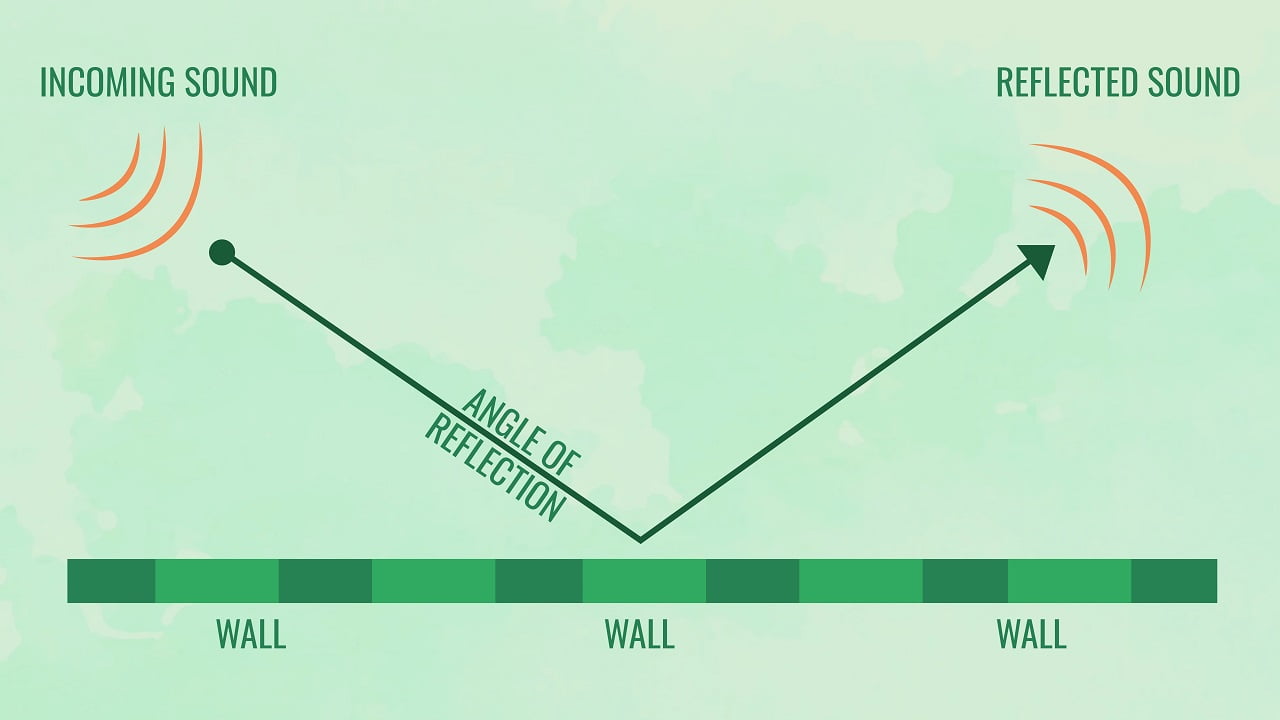
In either case, you can deaden sounds or make the room soundproof with two noise-controlling strategies:
A. Absorption
This technique typically employs installing foam and acoustic foam panels on walls, among other things, for sound absorption. It’s usually used to lower sound levels in a room, and will absorb some amount of sound within the room itself. But it’ll not do much to stop transference of sound waves outside the room.
B. Reduction
Oftentimes, sound holes or gaps in the walls between rooms facilitate sound transmission. You may also find air gaps in other areas of the rooms, such as near the electrical outlets, switch boxes, light fixtures, or around the door frames and windows that cause sound leakage.
In such cases, you can use acoustical caulk or a sealant like green glue (not ordinary wall putty) to fill the gaps and solve the problem. The best use of these is behind sockets in walls. An alternative would be to use weatherproofing strips, especially around any door or window, to block sound while increasing the energy efficiency of the room by means of thermal insulation. After all, saving on power bills never hurts anyone!

How To Soundproof An Existing Wall
It’s possible to create a soundproof wall and block unwanted noise without performing any invasive procedures. Some of the most popular non-invasive soundproofing methods include:
1. Hanging Acoustic Panels And Soundproof Curtains
As mentioned above, acoustic panels can help absorb sounds, but they don’t guarantee stopping sounds entirely.
Generally, acoustic panels are made of timber, and these have a layer of mineral wool insulation behind the wood, which works to absorb sound. Besides, you don’t have to worry about these panels spoiling the look of your room, as they come wrapped in decorative fabrics. You may also find acoustic panel wall art pieces that will get the job done while enhancing the interior décor like nothing else.
Alternatively, you can opt for acoustic curtains for soundproofing both windows and walls, as these will help absorb the sound. Remember that the thicker the material and folds on the curtain, the more will be its sound-absorbing capacity.
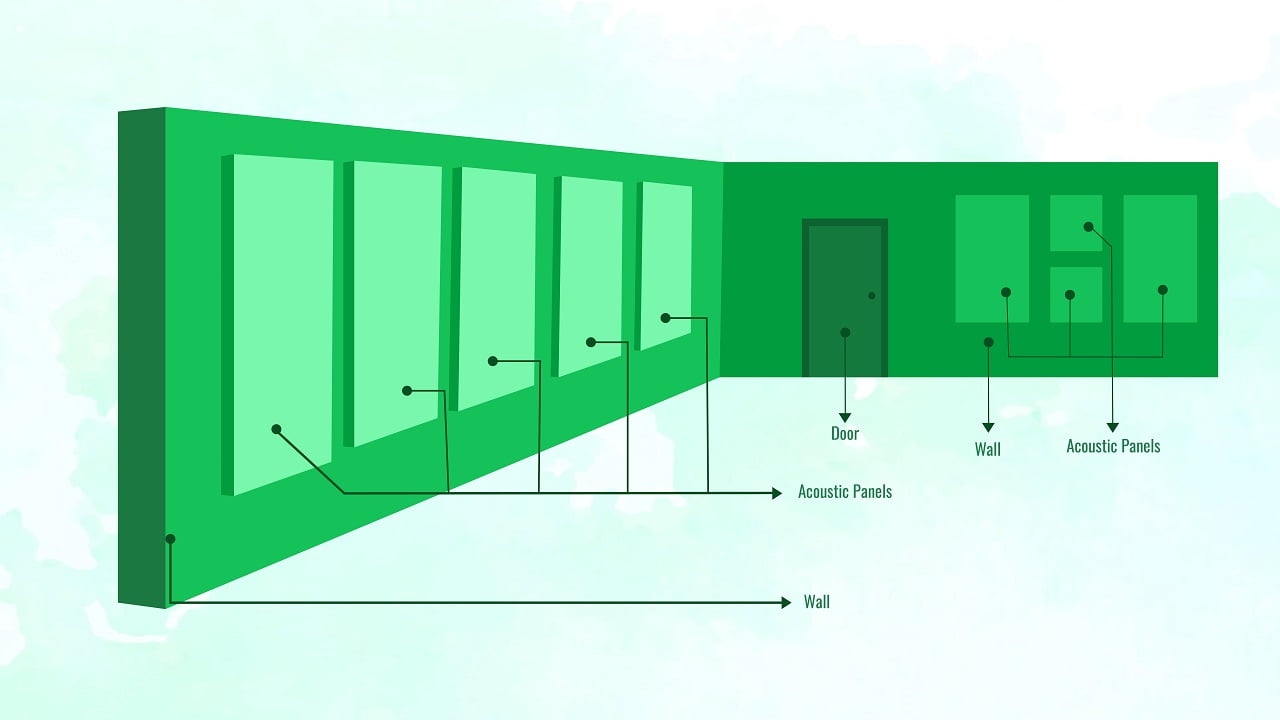
2. Adding Mass To Existing Walls
Well, before anything, let me tell you that by increasing wall mass, I’m not asking you to rebuild a wall! You can soundproof a wall by simply adding a structure to it, such as a cabinet, preferably extending from the ceiling to the floor.
This noise control method can work extremely well for thin walls that facilitate sound transfer between adjacent rooms. Aside from that, consider adding a soundproof drywall made from viscoelastic polymer and gypsum to reduce noise. Or, you can add one or more layers to an existing drywall.
Although standard drywall isn’t as effective as soundproofing drywall, it’s cheaper than the latter. Hence, many people prefer installing multiple layers of the same to block out noise.
You can even install more soundproofing materials, especially something like mass-loaded vinyl (MLV), on any interior wall to reduce sound transfer. This is a popular method used to soundproof shared walls between cubicles or similar structures. Likewise, adding MLVlto the additional layers of drywall can aid in the noise reduction of interior walls.
I’ll talk about installing MLVs on walls in a later section.
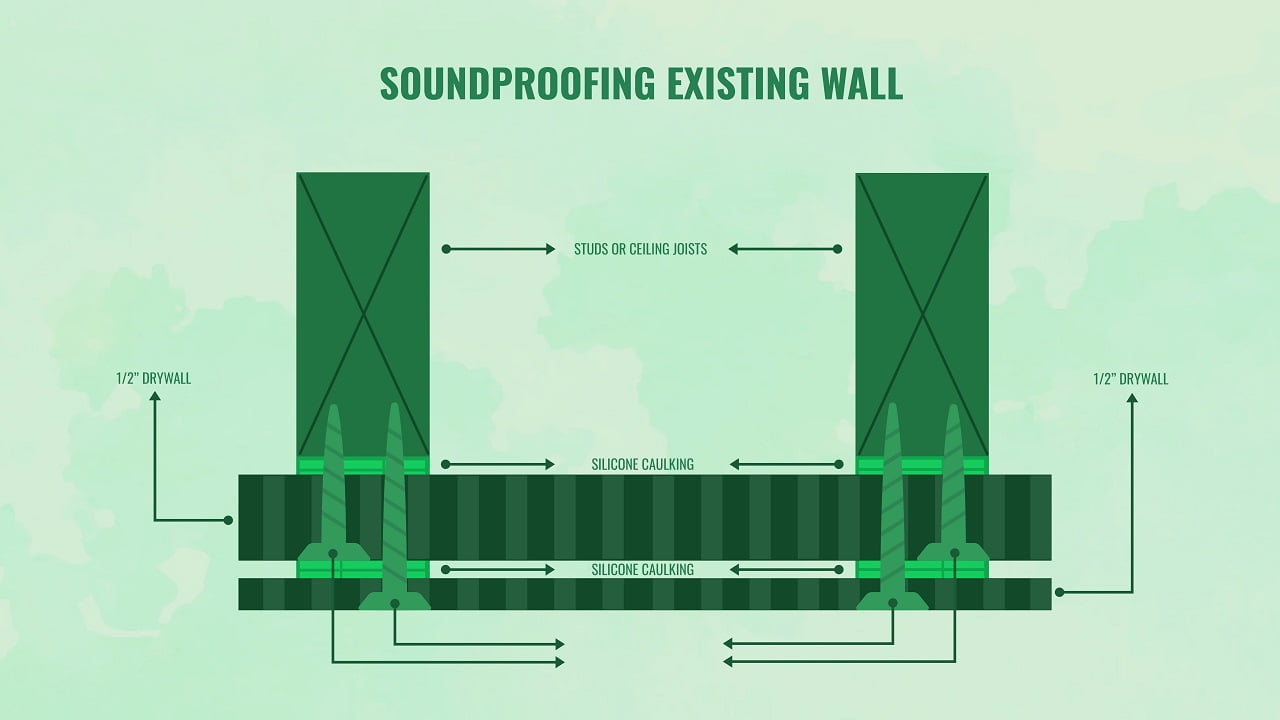
3. Using Soundproofing Paint
Another easy DIY wall soundproofing method involves painting the walls of your room with soundproofing paint. Such paints are generally thicker than the standard wall paints on the market, which make them a suitable sound barrier for blocking out low-frequency noises.
However, you may need to pair this technique with some other method in case there’s more noise.
4. Using White Noise Machines
Now, white noise machines don’t work directly to minimize or block noise transfer, but they make you less sensitive to changing sound frequencies. Simply put, these machines emit “white noise,” or all human-audible sound frequencies ranging between 20 to 20,000 hertz and “mask” unwanted sounds.
Each frequency is distributed equally for sound masking purposes, meaning you won’t hear any more sound entering the room. White noise machines can also help you fall asleep quickly in a noisy room or environment.
Do note that when it comes to soundproofing existing walls, this is just scratching the surface. If you really want to know more about the topic, please read my detailed guide on how to soundproof existing walls.
How To Install MLV?
As promised, let me now take you through the process of installing mass-loaded vinyl on existing walls. You will need the following materials:
- Mass-loaded vinyl rolls
- Pencil or chalk
- Ruler or measuring tape
- Roofing nails or fasteners
- Utility knife
Start by detecting the location of the noise leak and mark the wall studs (the columns in the frame to which the wall is attached) in that area with a pencil or chalk. Make sure you mark a perimeter (in any shape) covering the location of the noise leak. Now, measure this area and note down the measurements.
Lay the MLV roll on a flat surface and draw an outline with the measurements taken earlier. Using a utility knife, carefully cut out the material and keep it aside.
For the next step, you’d need someone to help you out. Ask the person to place one end of the vinyl on the stud and secure it with a roofing nail (fastener). From here, hold the vinyl so that it maintains a straight edge and secure it with more roofing nails. Do this for all sides. I’d also suggest sealing the edges with barrier tape to prevent the vinyl from coming off.
Tip
If you end up covering any power outlets or electrical boxes during the process, simply cut the vinyl to expose the fixture behind. You can use an acoustical sealant near the perimeter of these fixtures so that the vinyl doesn’t come off from that area.
How To Stop Sound From Echoing In A Room?
Sometimes, the reason for a noisy room is not faulty wall construction but the echo within the space that can amplify even the slightest noise into a loud sound. This is primarily caused by the absence of adequate objects to absorb or reduce sound. As a result, the sound keeps reverting or bouncing off the walls before it eventually dies down.
In such cases, the best thing to do is introduce more furnishings like a thick carpet and curtains and furniture pieces to the room and place them near the walls. Remember that although this step may not prevent the entry of exterior noises into the room, it can dampen the reverberations to make the room quieter.
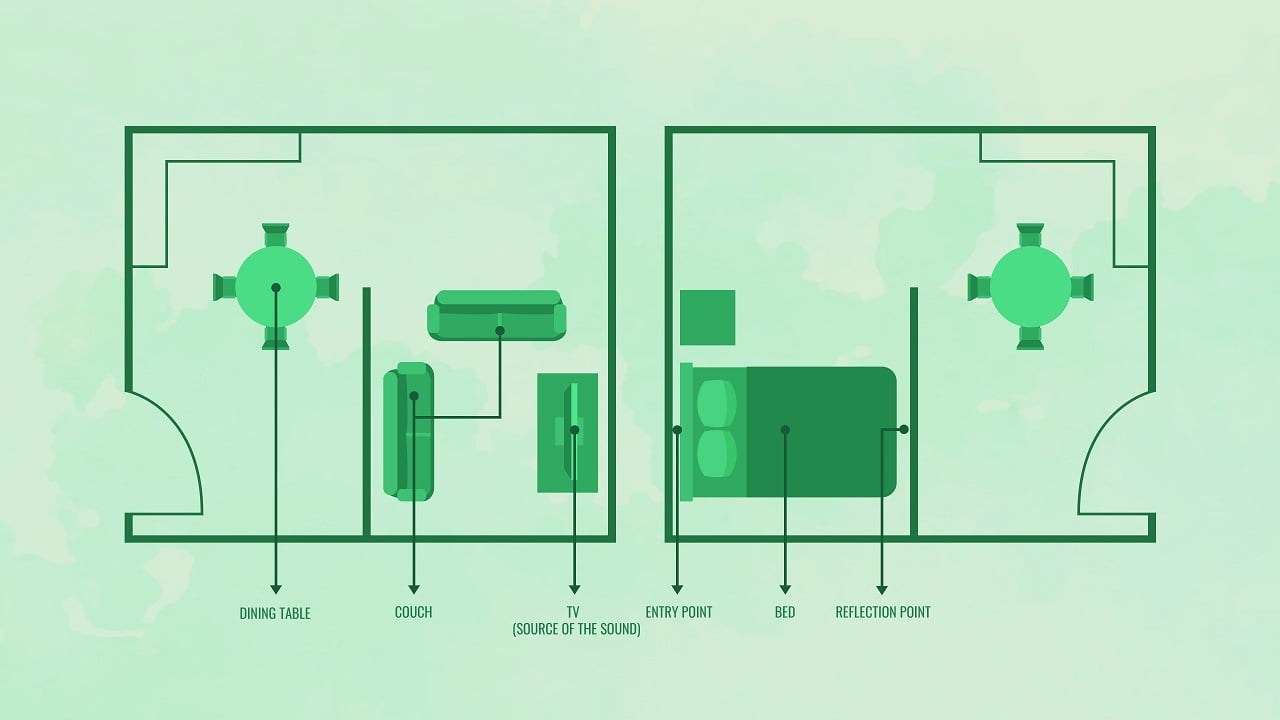
How To Build A Soundproof Wall?
If you’re building or renovating your home, it’s the perfect opportunity for you to soundproof the walls from within using decoupling and sound absorption techniques. Although this is a job best left to the professionals, it may still be helpful to have a general idea about these procedures.
1. Decoupling
Simply put, decoupling is the process of separating two walls to restrict the transmission of sound vibrations between them. And this can be achieved by framing the studs in 3 different ways.
A. Double Studs
Double studs involve the construction of two stud frames with some gap between them and attaching drywall to the exterior of either side of the frame. But keep in mind that such a construction will take up extra space and may not be suitable for smaller rooms.
B. Staggered Studs
Builders typically install a wide sill plate at the bottom of the wall to be soundproofed and follow it up by placing narrow studs. While one stud is attached to the right end of the plate, the other one is attached to the left so that there’s some space between them. This way, each stud will be attached to one drywall sheet without reaching the other side.
C. Resilient Channels
A resilient channel is a flexible attachment that can expand to absorb any sound vibration or noise coming through thin walls, existing sheetrock, or new layers of drywall sheets. Resilient channels are compatible with any standard stud framing (construction)- builders generally attach them to one side of the frame, which also makes for a compact structure.
2. Sound Absorption
Insulated rolls and slabs made of minerals or molten rock (or a combination of both) can be installed between studs for effective sound reduction. Another method would be to install standard fiberglass slabs or panels on the stud frame.
A pro tip
keep an eye on the sound transmission class (STC) rating of the sound insulation material you plan to use. STC rating is measured in decibels, and it’s used to gauge the efficacy of the material in minimizing unwanted noise transfer.
For instance, a soundproof wall with an STC rating of 20 dB will facilitate the transfer of even low noises, meaning you may hear someone speaking softly in the next room. However, a soundproofed wall with an STC rating of 60 dB or more can effectively stop noise transfer. Long story short, the more the STC rating, the better the wall soundproofing will be.
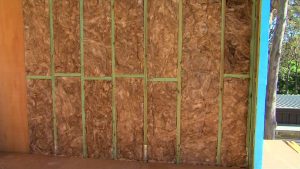
How To Soundproof Walls Conclusion
Many factors, such as your budget, the urgency of the situation, the sound quality, and the time you can spare, will determine the right way for you to soundproof walls.
For example, adding furniture or acoustical panels to the wall can be a quick, effective, and budget-friendly solution if you’re bothered by low-frequency noises. However, you may need to rebuild the wall or install a soundproofing drywall if you’re constantly exposed to loud noises.
I’d suggest contacting a professional soundproofing service to locate the exact spot and causes of the sound leak and taking the right steps toward implementing effective wall soundproofing methods.
